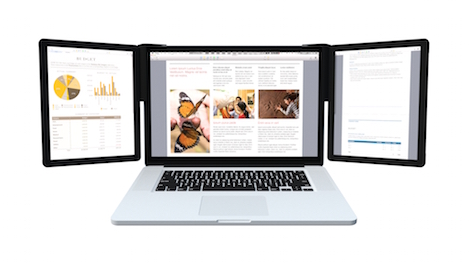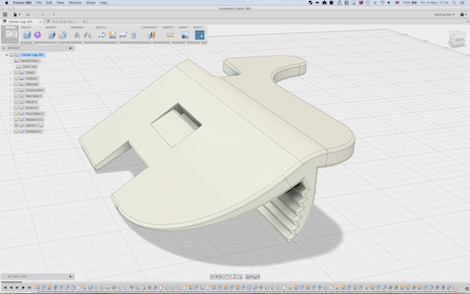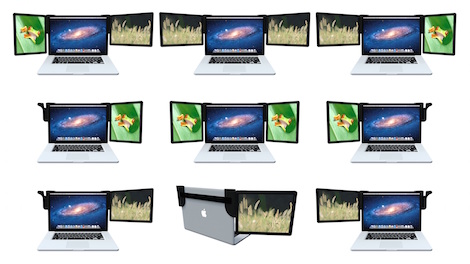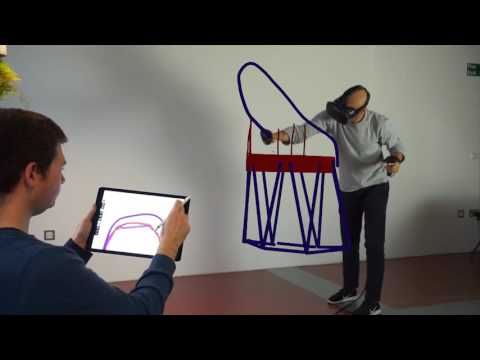
We’re all aware, in the design and engineering community, of the wealth of activity that’s surrounding Kickstarter, IndieGoGo and the other sources of crowdfunding for hardware development projects.
From the big hitters that have achieved millions in funding through to the small, one or two person teams, and built small scale business.
Over the last year or so, we’ve been talking to the folks behind many of these projects and finding that there’s typically two streams of projects.
There are those VC funded projects that use Kickstarter to build up an initial customer base, achieve traction quickly and prove their idea in the marketplace – not to mention build up a decent order book. Examples I’m thinking of here is perhaps best illustrated by FormLabs.
Then there are those that are, essentially, one person with a good idea that’s looking to gain the funding they need to see where they can get to. To my mind, these are perhaps the more interesting. When you’re bootstrapping an idea, a product and a business, then the challenges you face are different.
Different time scale (perhaps you have a little more time without the VC on your back), different pressures (finance is one, but also sheer effort, when it’s typically done in spare time away from the day job that’s paying the bills).
I recently got to talk to one of the latter category, just a few miles up the road in Nottingham. Matt Relf is currently running the PackedPixels campaign on KickStarter.
The concept is that when you’re in the office, you’re used to having multiple displays connected to your workstation or laptop.
The issue he found, as a software consultant by day, is that as soon as you’re on site with a client, you lose that screen real estate and you’re stick with your single monitor built into your laptop.
//www.youtube.com/embed/TFvNAy3KTSk
As he explained, “My background is computer science, but I’ve moved into much broader range technical consultancy and project management, covering design infrastructure deployments through to software development with project management and business management in between.
“Around that, I spend a lot of time on client sites. My frustration came from being on-site and going from a three monitor set-up at my office, to a single laptop.”
“I’d looked at things like AirDisplay with an iPad and the like, but none of them have been very satisfactory with low resolutions and slow refresh rates.
“Also, with items like AirDisplay and you’ve not got a friendly wifi connection, you can’t use it at all anyway. I had an aspiration to find something better.”
“A couple of years ago now, I came across information that showed the displays in iPads are relatively straight forward to interface with and that was the point that this is something that is now achievable, wouldn’t require a great deal of electronics knowledge to put in place. That then put me onto start to think of PackedPixels’ unique point, the mounting system.”
From IT Pro to designer
I was curious to know how Matt, an IT professional, had come to have the idea then the skillset that’s required to do this kind of work. He told us “Alongside my professional IT career, I’ve always been doing CAD/CAM and 3D design on the side, so I’ve been around some of the software tools. I was a massive fan of SketchUp. I’ve done a lot of furniture and built my own large format CNC router. That’s how I have appropriate skills to come up with the mounting system and how it works.”
“In the end, I decided that while the electronics was relatively simple, I brought in some external help with the circuitry. We’ve been through prototyping and case design in various iterations, purchased a 3D printer to assist (Editor’s note: Matt found a bargain on eBay with a BitsFromBytes 3D touch).”

I was introduced to Matt by the Fusion team at Autodesk and I was curious to find out why he’d moved from SketchUp to Autodesk’s cloud-based Fusion design system. He explains “It was because I was starting to have conversations with injection moulding companies to start scoping out the costs for tooling up the cases.”
“They quickly told me that the SketchUp models weren’t good enough and I quickly came to understand why – because it’s not a system that’s built for production data like SolidWorks. When you get down to the production details, you don’t want a facetted model.”
“I started looking around for something to move to. I’d used SolidWorks in the past, but the cost of seats for that or Pro/Engineer were simply prohibitive.”
“On one of my searches, I stumbled across the beta for Fusion. The fact that it was free, so I started to play with it and got the results I wanted quickly. It was one of the first tools that I’d used that was somewhere close to the ease of use of SketchUp.”
“I followed it through the beta, when it went to a paid model, I stuck with it and paid up my cash. Though there have been frustrations with bugginess, on the whole, the price point of it is very attractive and I’m getting the results I want.”
What next?

The PackedPixels campaign has 10 days to go and is nearly there – gaining 54 grand of its 60 grand goal.
According to Matt, his observations have told him that there’s a last minute rush of backers that come on board when it’s clear that a project is close to being successful.
In terms of where next, Matt is currently looking for assistance with some of the fine details of finalising the engineering of the case and pushing the whole thing through into production.
What’s interesting is that Matt’s location means he has access to local tooling and mould services, so he’s looking to keep production in the UK if possible.
When asked why go the crowd funding route, he told us, “It enables us to do several things simultaneously at low risk. I can do my market research and see if it’s viable.
“I’ve got a focus group of folks that are interested in the product who will help answer any questions as things progress. It helps me raise the significant funds needed to pay for injection moulding and also doesn’t give any equity away.”
“It wraps up all those nice appealing features and doesn’t hurt that there’s a lot of media interest and buzz around the whole thing.”
If you fancy getting in on the action (we do, certainly), then the PackedPixel kickstarter campaign is here.
Update: The folks on the Autodesk Fusion team just uploaded a video on what Matt is up to – worth a watch!






